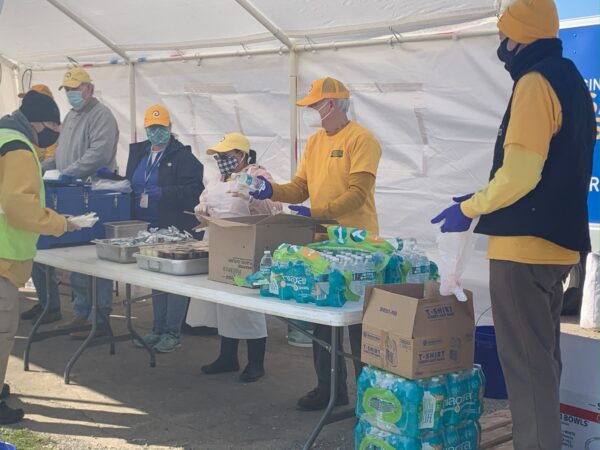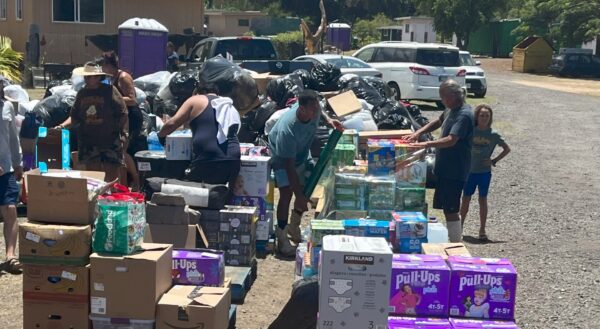In disaster response circles, when conversation turns to the weather, it’s usually about the outlook for hurricane season. Recently, a graphic that made the rounds showed severe impacts along the entire East Coast as El Niño shifts to La Niña. We might easily panic, assuming the worst will happen, or we might dismiss this report as coming from the same people who predicted above-average snowfall this year. But whether we worry about the worst or hope for the best, we want to make sure we’re prepared. Impact Disaster Response wants to help you and your church prepare to respond, whether a storm comes to your community, another part of Virginia, or another state.
If you’ve followed disaster response for a long time, you probably remember most responses being large-scale, out-of-state responses with volunteers traveling en masse to the hurting community. You might remember training consisting of large-scale events where individuals from multiple churches across a region would train and prepare to deploy. And you likely remember most partnerships falling along neat denominational lines. But as we’re all probably tired of hearing, everything changed in 2020, and we are still figuring out what that means. So as we prepare for whatever the 2024 hurricane season has in store, we want to look at how responses have changed in the last few years.
For much of the first half of 2021, Impact Disaster Response feeding teams had the privilege of serving at the vaccination clinic at the Richmond Raceway, where 150,000 people were vaccinated and hundreds of volunteers were fed daily.
In fall 2021, a storm struck in Buchanan County that caused severe local flooding, displacing dozens of families. For the next nine months, Impact Disaster Response staff and volunteers provided meals, assessment and cleanup, and stayed on to rebuild and restore homes. During this response, we also sent teams to New Jersey to serve a flooded community there, when New York/New Jersey Baptist Disaster Relief requested our help.
When the final team drove the final nail from the 2021 storm in Buchanan County, that community had eight hours of rest before a new storm struck—flooding a different part of the county. The difference this time was that the storm got national news coverage. Because we had been there for months, we had the relationships and people in place to respond immediately, finding a way to feed people with very little outside support, picking up right where we left off serving the community, with Grundy Baptist Church again offering the rooms we’d been using to house volunteers to welcome the next round.
Even as that storm recovery continued, we received a new call when Hurricane Ian struck Florida. As teams from other states prepared to head to Florida, the storm looked like it would come to Virginia. At the request of Virginia Department of Emergency Management, we held back to see what would happen. By the time we knew Virginia would not be impacted, Baptist teams were already deployed everywhere Florida Baptists could connect them. For those who had been ready to head to Florida, it felt like we had missed our window to serve.
But a few days later, we received a call through the Fresh Expressions network to support a church that was serving in Cape Coral and Fort Myers. They didn’t have denominational support or training in how to respond, but they were quickly becoming the center of their community’s response. We partnered with them, trained their volunteers, and supported their response with volunteers, equipment, and funds that churches and individuals donated for Hurricane Ian. That recovery work continues, with teams from Virginia serving alongside volunteers from Florida to restore the Pondella community and has seen at least one new dinner church form as a direct result.
As storms have continued to strike, we have also sent volunteers to serve with our partners in other states. North Carolina Baptists on Mission have long been a trusted partner, and we have sent volunteers to serve alongside their chainsaw, feeding, and mud out teams. Our churches continue to connect with their rebuild centers from previous storms as well.
In an even bigger departure from how we have served in the past, we have served best in Maui by not sending volunteers. At a time when that community was inundated with well-meaning but not always helpful volunteers, our willingness to send the support our partners in Hawaii requested and stay away while they served their own community made a huge impact on their openness to future partnership.
Whatever storms come this year, we will be ready to respond appropriately as requested. To realize that goal, we need your help. Our typical training has shifted largely to a church-focused model, where churches can form teams that can respond together and apply those principles to serve in their local community. This spring we hosted training with local churches and associations, and we saw a team new to disaster response get their first chance to serve – providing meals for a state-wide event that brought various agencies together to practice what a hurricane response could look like this fall. We are looking ahead to the fall and will schedule new in-person training for volunteers soon. You can learn more about in-person training at https://impactmissionsmovement.org/disaster-response/training/. You’ll find hands-on training opportunities in feeding as part of our mission camps, and once our fall in-person training dates are finalized you will see those opportunities there as well. And if those times or locations don’t work, you’ll also be able to train online. We’re revamping our online training, and those courses are available at https://my.bgavdr.org/.
We don’t know what the 2024 hurricane season will hold. The predictions we see may give us an idea, but whether big storms strike the entire East Coast or a smaller storm strikes one community, any disaster is a disaster to those affected. And we will work together to ensure they recover and see God’s love in action as they do.


